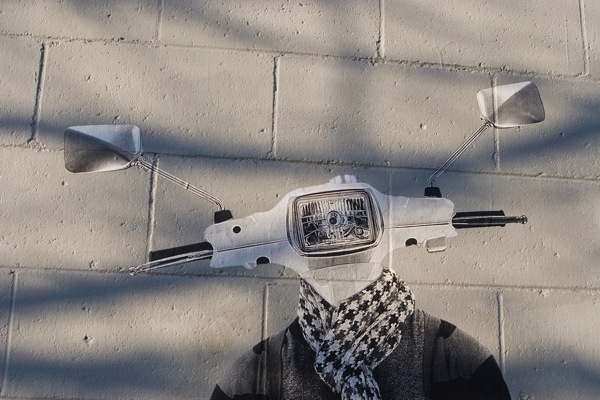
Hrag Vartanian has a fantastic article on Hyperallergic about Fauxreel and what it means when street artists take do corporate jobs outdoors. Fauxreel found himself labeled a sell-out a couple of years ago when he partnered with Vespa for a campaign that involved illegal wheatpastes on the streets of Toronto. The whole debate is very interesting, because really, all street art is advertisement to some degree, so where do we draw the line at what is acceptable? And of course, do artists have a right to partner with companies on advertising campaigns, and if so, how should they go about it? Personally, I’d say it’s generally great when artists collaborate with corporations on projects, but they need to avoid any illegal pieces for that advertising campaign.
Here’s some relevant thoughts from Fauxreel, taken from a recent interview on Unurth:
I definitely think artists can work commercially and with a conscience, however, I think that if you are going to do this you should be aware of the differing motivations and you should try to make the commercial project provoking to the public in some respect. Because I like blurring the lines and playing with the public’s perceptions in some of the work I create, I immediately realized that the difficulties surrounding an illegal street campaign completed by a commercial interest would be a perfect fit for me. So I approached the Vespa Squarehead project with the goal of raising questions about the role of advertising in public space, examining the grey area between street art, graffiti and advertising and attempting to make connections between products and people’s identities. If I can complete a series of work that will pose and examine these types of questions and it will allow me to make some money at the same time, there’s nothing wrong with that in my opinion.
Will working on a project like that endear you to the public? Probably not, and for me that’s okay. I think the notion a great deal of the public holds, is that street artists should all fall under the same political leftist umbrella and they should all be anti-capitalism. This is certainly untrue (think about Banksy or Shepard Fairey as businessmen and Princess Hijab as a right wing street artist) and it would be boring if it were. Although the simple act of placing up illegal artwork can be said to have political connotations, if the work in question is a stencil of Talib Kweli or a paste up of fried chicken, the work is then purely aesthetically based and not political at all.
In terms of drawing a line between street art and street advertising and deciding what distinguishes the two, I am not the one to be judging that. I am far more interested in the overlapping areas in between and engaging with audiences who appreciate work that challenges the political status quo associated with street art, or art in general, as well as talking to fellow artists who understand these nuances and who utilize them within their work and their approach to developing their practice and essentially their brand.
Hrag’s analysis of the issue is insightful and definitely an interesting read. He’s one of the few bloggers who really writes about street art in a serious academic fashion, in addition to enjoying the art.
Photo by icathing
